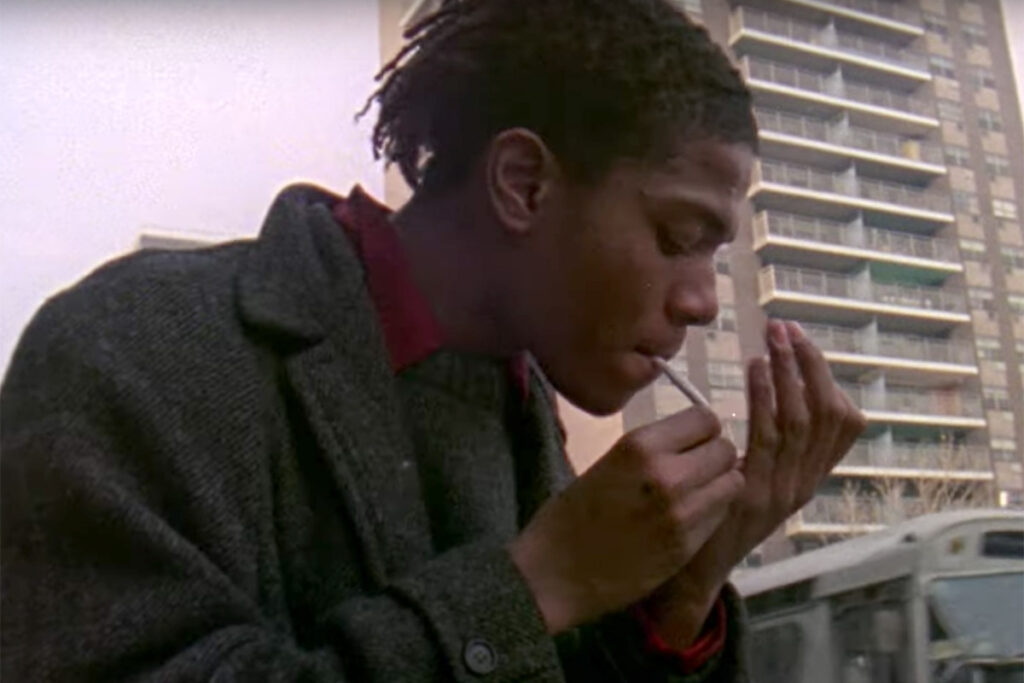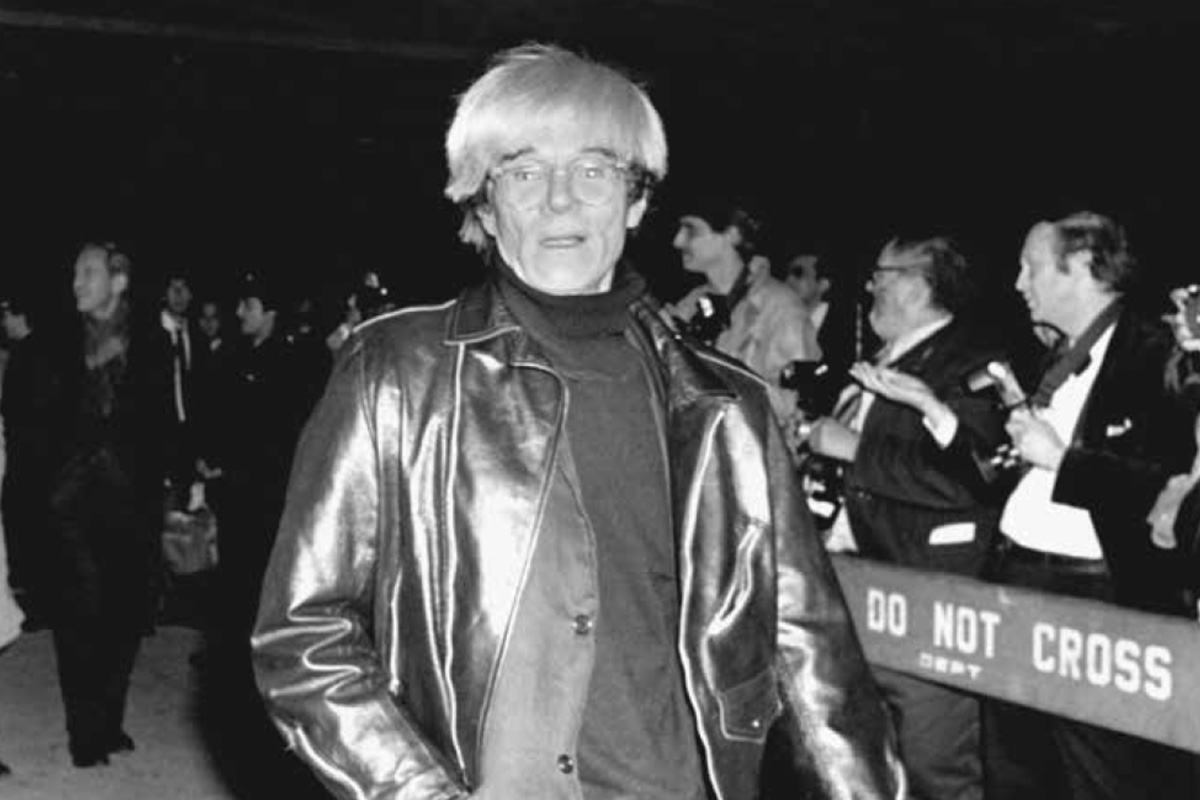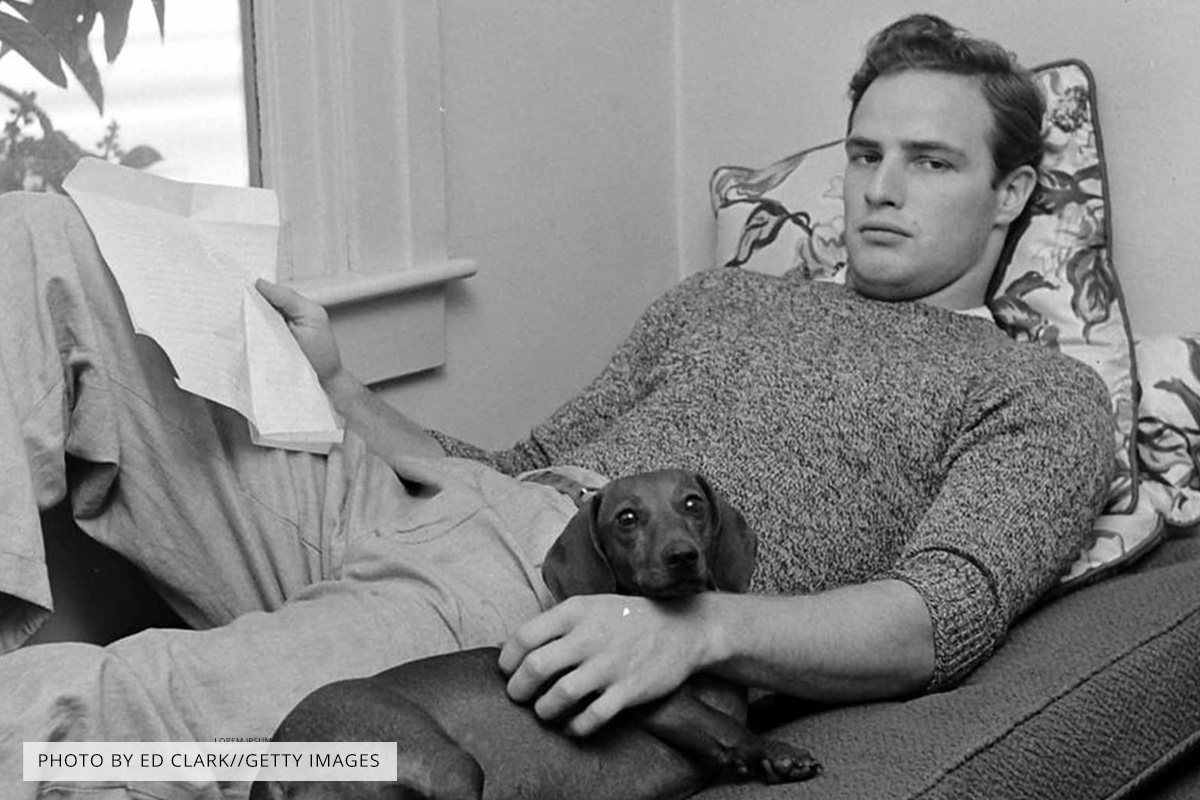©2022 by Amanda Sheppard
At age 20, artist Jean-Michel Basquiat emerged from the downtown scene with a budding sophistication equally rooted in abstract expressionism and the post-punk, no-wave, hip-hop, graffiti grit of the Mudd Club avant-garde. His handsome looks and downtown swagger made him an overnight celebrity, and his bold colors and raw sophistication made his work a favorite among collectors. His proud veneration of Black heroes and his unflinching criticism of racism and class disparity made the WASPy New York art world uncomfortable and him an outsider.
Basquiat lived fast, died young, and left 1,000 paintings after a ten-year career. And now his works are worth more than ever, with his most recent sales totaling over $400 million at auction in 2021, according to Forbes. Last year, the Basquiat estate also made headlines for several licensing deals with Coach, Doc Martens, and Converse sneakers, which sparked criticism from Basquiat’s friends Al Díaz and Alexis Adler. Tiffany & Co. also sparked criticism for featuring Basquiat’s painting, Equals Pi, in an ad featuring Jay-Z and Beyoncé, who sports a 128-carat diamond necklace.
Further fueling the controversy, Tiffany VP Alexandre Arnault implied that Equals Pi’s blue shade was a nod to Tiffany’s signature blue packaging in press materials for the ad campaign. His mostly misunderstood life has been the subject of multiple documentaries, and a Julian Schnabel film and another Basquiat feature film, SAMO Lives, were announced earlier this year. The Basquiat estate has also announced King Pleasure, a large-scale retrospective of Jean-Michel Basquiat’s work, opening on April 9, 2022, in NYC. The truth of Basquiat’s legacy occupies a beguiling space between the 27 club cliches and the mischaracterized associations with luxury, but what fans of his mystique overlook is the unique point of view and zeitgeist that makes his art so potent, in the first place.
The art world of New York in the 1980s was a study in excesses and exploitation. As the old guard of the 1970s had stagnated under the stark homogeny of Minimalism, collectors keen to invest their wealth turned their attention to the bold, rebellious works of DIY artists found in alternative spaces such as Colab’s The Times Square Show. The massive 24-7 exhibition of sculptures, installations, paintings, and performances held inside an abandoned massage parlor featured artists and graffiti writers from the Lower East Side and uptown’s Fashion Moda.
The Times Square Show earned mentions in ARTFORUM and Art In America Magazines and led curators to organize shows with this new crop of emerging artists. Wealthy art collectors were especially hungry for graffiti art. Graffiti writers such as CRASH, DAZE, and the Fabulous Five were getting gallery shows at home and abroad, making thousands of dollars off their works. Amid the graffiti art feeding frenzy, collectors took notice of young Neo-expressionist painter Jean-Michel Basquiat. Though not a graffiti writer in the strictest sense, Basquiat had gained a cult celebrity status through a series of anonymous aphorism:
“SAMO 4•THE SEDATE, SAMO SAVES IDIOTS AND GONZOIDS, SAMO AS AN END TO VINYL PUNKERY, SAMO AS AN END TO CONFINING ART TERMS, SAMO AS AN ALTERNATIVE 2 “PLAYING ART” WITH THE “RADICAL CHIC” SECT ON DADDY’$ FUNDS 4 U”
Basquiat’s SAMO tags, in particular, were strategically written around the artsy SoHo neighborhood and TriBeCa and took aim at rich kids and criticized the New York City art establishment. Basquiat tagged the SAMOs throughout Manhattan with his friend Al Diaz, the semi-retired graffiti writer known in New York subways as Bomb 1.
Basquiat also sneaked into the School of Visual Arts and tagged SAMOs in the hallways. In Phoebe Hoban’s Jean-Michel Basquiat: A Quick Killing In Art, Keith Haring recalls, “I first met Jean-Michel one day at the School of Visual Arts, when I got past the security guard. Then later I saw all the fresh SAMO tags, and I realized he was SAMO.”
Haring and fellow SVA student Kenny Scharf later joined Basquiat on his SAMO sprees with their graffiti art. The SAMO tags were hard to miss and even written about in The SoHo News. Basquiat, however, had pulled the plug on SAMO years before to focus on art and music but not before he and Diaz sold their story to The Village Voice.
Basquiat further capitalized on their newfound SAMO fame by parleying it into a self-promotion strategy for his solo career as an artist. His first stop was the Canal Zone Party in honor of the Fabulous Five graffiti crew. “Fab 5 Freddy and a guy named Stan Peskett put together a party called The Canal Zone Party. At that party, it was really the first time that downtown scene and uptown scene, if you wanna call it that, hip-hop and the fine art world downtown, sort of rubbed shoulders.”
Michael Holman recalls at a 2017 MoMa Q&A Panel, “Jean was not going to be left out and he showed up and we gave him an opportunity to put a big tag together on a photo paper and at that party we met for the first time, and Jean offered to start a band right then and there.” Jean-Michel Basquiat played the wasp synthesizer and clarinet alongside Michael Holman, Wayne Clifford, Nicholas Taylor, and Vincent Gallo in Gray from 1979 to 1981. The Avant-noise band played shows at CBGBs, the Mudd Club, and Hurrah until Jean-Michel’s painting career began to take off. Gray reunited in 2010 and released the debut album, “Shades Of…” which features Jean-Michel’s prank call track, “Suicide Hotline.” Gray also played some shows, including Questlove’s “Shuffle Culture” at Brooklyn Academy in 2012.
Jean-Michel’s next stop on his self-promotion tour was Glenn O’Brien’s TV Party, a loosey-goosey call-in public access show inspired by Hugh Hefner’s Playboy After Dark and Andy Warhol movies. Jean-Michel introduced himself as “Mr. SAMO” and soon pulled the plug on him and Al’s SAMO campaign indefinitely when he declared “SAMO IS DEAD” on SoHo walls in a bid to advance his artistic ambitions. Jean-Michel’s public declaration “…damaged our relationship,” Al Diaz recalls in the 2017 BBC Basquiat documentary Rage To Riches.
Diaz went on to play percussions in the no-wave dance group, Konk, alongside friend and SAMO affiliate Shannon Dawson. Diaz’s percussion work also appears on the Basquiat-produced hip-hop record “Beat Bop,” featuring K-Rob and legendary graffiti artist Rammellzee.
Basquiat found his element on TV Party and became a permanent fixture alongside TV Party regulars Fab 5 Freddy, Blondie’s Debbie Harry and Chris Stein, Walter Steding, Robert Fripp, and The TV Party Orchestra featuring Lenny Ferrari. Show regulars often worked on and behind the cameras, and the show’s loose format allowed Basquiat opportunities to generate SAMOesque aphorisms onscreen from the show’s control booth. Glenn O’Brien later wrote a starring role for Jean-Michel in his artsy underground fairytale Downtown ’81, directed by TV Party cameraman Edo Bertoglio with Maripol as director of photography.
The film is a heightened semi-biographical fantasy day in the life of Basquiat, who finds himself locked out of his apartment after a one-month stay in the hospital and needs to sell a painting to pay his landlord. Surreal hijinks ensue as he traverses across Manhattan in search of a buyer and gets paid with a check. The film also features Debbie Harry, Chris Stein, Amos Poe, Fab 5 Freddy, Lee Quiñones, Michael Holman, and killer live performances James Chance & The Contortions, Kid Creole & The Coconuts, Tuxedomoon, and Plastics. The soundtrack also features the Gray track, “Drum Mode.”
Shortly after declaring SAMO dead, Jean-Michel experimented with various artistic mediums and applied his ideas to various little moneymaking endeavors. He painted sweatshirts and jumpsuits and sold them at Patricia Fields’ boutique under his brand, Man-Made. He collaborated on a series of color copy collage postcards with artist Jennifer Stein and even sold a couple to Andy Warhol; Basquiat spotted Warhol having lunch with Henry Geldzahler from outside the now-defunct WPA restaurant. When Basquiat wasn’t peddling his wares, he hit the clubs with his bandmates and looked for his next place to crash and new surfaces to paint. Young and handsome, Jean-Michel was a hit with the ladies and made friends on the dance floor at the Mudd Club.
One of his earliest crash pads was with biology student Alexis Adler. The two hit it off while crashing with friend Felice Rosser. Jean-Michel soon wore out his welcome. Alexis found a place for her and Jean-Michel to stay on 12th Street, and the friends eventually patched things up. Jean-Michel made up for what he lacked in cash and a stable residence in creativity and charisma. While living with Adler, Basquiat began several of his earliest creative experiments. Jean-Michel painted bathroom doors, refrigerator doors, radiators, windows, and when he ran out of surfaces, Basquiat picked up old fixtures from burnt-out buildings discarded on the sidewalk. Adler, a photographer from a young age, collaborated with Basquiat on several photos during his stay. Alexis and Jean-Michel’s early experimental photos and young Basquiat photos from Al Diaz are now available as NFTs on the Triller marketplace.
In June of 1980, Jean-Michel took part in The Times Square Show. The joint exhibition between Colab and Fashion Moda was held in an abandoned massage parlor and featured over 75 artists, including performance artists and filmmakers, and ran 24/7.
Mudd Club author Richard Bloch recalls, “Like Mudd, Times Square had that same kind of collective energy and do-it-yourself vibe, packed into a deliberately transient thirty-day run. Harring and Scharf, Basquiat, Brathwaite, Jenny Holzer, and Kiki Smith put effort into the effort, distinguishing themselves as a cutting-edge renegade force. White Street girls Vicki Pedersen, Mary Lemley, Sophie VDT, and Eszter Balint set up a fashion lounge with the help of Basquiat. Salvation Army clothing smeared with paint was a big part of the fashionable artistic lounge statement, or what Pedersen calls ‘our ragtag manifesto.'”
Jean-Michel also, “climbed a ladder, and with red gaffer’s tape, wrote out the words’ FREE SEX’ in foot-high letters,” according to Marc H. Miller’s 2019 Gallery 98 article. It was quickly replaced with the words, “TIMES SQ. SHOW,” as the female artists, “suddenly had to deal with the neighborhood’s seedier characters,” recalls Miller. Basquiat’s painting on the Fashion Lounge wall garnered praise from Jeffrey Deitch for Art In America Magazine and compared his style to Willem de Kooning. Fun fact: Jeffrey Deitch now represents the estate of the late Rammellzee.
Inspired by the success of The Times Square Show, curator Diego Cortez held the New York/New Wave show at PS1 one year later. The show documented a dying scene and a cheeky glimpse into the future. New York/New Wave was a massive showcase for the art and culture which connected the convergence of the downtown scene, the graffiti and hip-hop culture of the South Bronx, and the underground luminaries which influenced both. The show was an avant-garde who’s who featuring Kathy Acker, William S. Burroughs, Henry Chalfant, Andy Warhol, Nan Goldin, the Fabulous Five, Lady Pink, Bob Gruen, Ann Magnuson, Robert Maplethorpe, Keith Haring, Kenny Scharf, Dondi, David Byrne, Maripol, and John Holmstrom, to name a few and included several works from Jean-Michel. Although popular with the public, critics indifferent to the counter-culture of the downtown nightlife mistook the exhibition’s tone and panned the show. Many were dismissive of the art itself and even repelled by the show’s reverence for it.
John Perrault of The SoHo News wrote, “‘New York/New Wave’ may not be a serious exhibition at all. It may be neo-Dada, a raspberry delivered with thumb to nose. I’m afraid it is a failure. The art itself is not ambitious enough.”
What set Basquiat apart from the graffiti bombers and even his fellow artists, Keith Haring and Kenny Scharf, was the mercurial sophistication of his visual language and wordplay. Like Judy Rifka, who also drew raves from Rene’ Ricard, Jean-Michel’s works at the New York/New Wave show riffed on other artistic works and movements as part of his style. His pieces were transitional with echoes of his recent SAMO past. He also worked in flashes of his early childhood memories as he incorporated written words. Basquiat’s work was expressive, communicative, personal, and signaled what was to come.
Ultimately, New York/New Wave proved a big win for Jean-Michel, who became the show’s breakout star. Even Peter Schjeldahl of The Village Voice referred to Basquiat as “A kind of street Dubuffet” with “flair, humor, and an almost automatic abstract elegance.” His informal dealer Cortez arranged a solo show in Modena, Italy, with Emilio Mazzoli. Cortez had also sold Basquiat’s works to Jeffrey Deitch and Bruno Bischofberger, who later Basquiat’s international dealer and introduced him to Andy Warhol. According to biographer Phoebe Hoban, “Sandro Chia was so taken with the artist’s work that he introduced Basquiat to Annina Nosei, who became his first real commercial art dealer.”
In his work at Annina Nosei’s, Basquiat continued to build on his mix of drawing, painting, writing, and thematic collage. He referenced abstract expressionists Willem de Kooning, Franz Kline, and Robert Motherwell. Basquiat also referenced Leonardo da Vinci’s anatomical drawings and Gray’s Anatomy book his mother gave him as a seven-year-old boy receiving treatment for sustained injuries from being hit by a car while playing stickball. Basquiat referenced books, cartoons, skully courts (children’s street game), and jazz and incorporated Haitian and Puerto Rican cultural ephemera to comment on Black history, athletes, celebrities, class disparities, and racism. He used bold primary colors– and his figures grin wild-eyed with so much movement they shout. Others narrow their eyes and grimace.
Basquiat, a polyglot, also wove Spanish colloquialisms into his compositions. He repeated and often crossed out words he chose to emphasize. Jean-Michel was into early hip-hop, industrial music– and William S. Burroughs when he applied a cut-up sensibility to his compositions.
Jean-Michel’s period at Annina Nosei’s gallery was pivotal in his artistic evolution. Basquiat’s time at Annina Nosei’s gallery also marked a turning point in his career, introducing his art to influential Fine Art collectors who catapulted him into art stardom despite the rejection and racist hostility from the New York art establishment.
Jean-Michel Basquiat died in 1988 from a heroin overdose, while his art work continued to increase in value. In May 2017, Untitled, a 1982 painting by Basquiat depicting a black skull with red and yellow rivulets, sold for $110.5 million.
999
By: Amanda Sheppard








